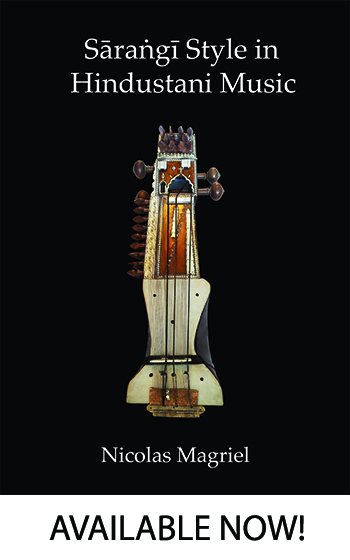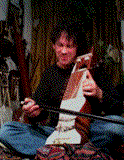Sangat, accompanying vocal music, is the sarangi's traditional public role. The best accompanists had intimate knowledge of the nuances of diverse gharana styles of khayal, thumri, and all other genres of classical vocal music. Many sarangi players say that accompanying is even more difficult than solo playing. One must often reproduce a vocalist's utterances simultaneously to listening to whatever he/she sings next. And by-and-large it is a thankless task. The social stratification of Indian art music mirrors the rigid stratification of Indian society. Vocalists will rearely converse with their accompanists in the green room, and they rarely give sarangi players time to tune their sarangis—there's just no condieration of what it means to have forty sympathetic strings to deal with. And they are fond of criticizing sarangi plasyers (often musicians with considerably more substantial pedigrees than themselves) for playing out of tune—unaware that out-of-tuneness is an inevitable consequence of not being given time to tune.
One lamentable consequence of sarangi's low status is that both archival recordings and commercial recordings of vocal music rarely mention the sarangi accompanists' names. This page is an attempt to demonstrate the beauty of sarangi accompaniment—one of the great features of twentieth century vocal music which has now nearly completely fallen by the wayside—replaced by the relentless tooting of the harmonium, a European import, originally used to accompany the hymns of Christian missionaries, a musical accessory for the shameful drive to convert the "natives".
The harmonium's poorly-tempered scale is categorically out of tune for Indian music, but it has been fondly embraced, even by the finest singers. Harmonium players are cheaper to employ than sarangi players. And they tend not to be Muslims, indeed they are often from the same educated Hindu middle-classes from which the majority of contemporary singers come, especially in Maharashtra.
Many audio recordings of sarangi accompaniment are available on the sister page for sangat audio. The first videos below are culleed from elsewhere—for the purpose of bringing these rare videos with good accompanyment into one place for access by enthusiasts. Any objections—do please let me know.
NOTE (2024): I have now uploaded many vocal-accompaniment videos of sarangi players that I worked with in the 1990s to their individual pages. These include Abdul Latif Khan, Baccha Lal Mishra, Zakan Khan, Kanhaiyalal Mishra, Santosh Mishra,Anant Kunthe and Murad Ali Khan.
We start with an extraordinary video of the octegenarian Padmavati Shaligram (Jaipur Gharana) accompanied by Ustad Roshan Ali Khan at the SRA in Calcutta: rag Nand.
Next the immortal Ustad Amir Khan accompanied by Ustad Munir Khan: rag Rageshri and a tarana in Malkauns. This is a rare treat as most audio recordings of Amir Khan have either harmonium or no melodic accompaniment at all. For the most part, sadly, Amir Khan, whose father was a sarangi player, distanced himself from the tradition from which he emerged.
Next a wonderful video of Ustad Abdul Latif Khan accompanying the sublime singing of Mallikarjun Mansur. Courtesy of the Gundecha Brothers who were, in the 90s, in charge of the archives at Bharat Bhavan, Bhopal. They were kind enough to have random excerpts copied for me—"maximum 10 minutes" from each full concert recording of my own Ustad. The rag is a "Todi ka prakaar"
And then the final concert of Mallikarjun Mansur's life, accompanied by Pandit Inder Lal on sarangi and Faiyaz Khan (the brother of Munir Khan above) on tabla:
Now we have a treat: from Lucknow Doordarshan (TV): Girija Devi, the queen of thumri, accompanied by the great Banaras sarangiya Bhejanath Mishra in 1979. First rag Jogkauns:
Then a Hori in Kafi:



